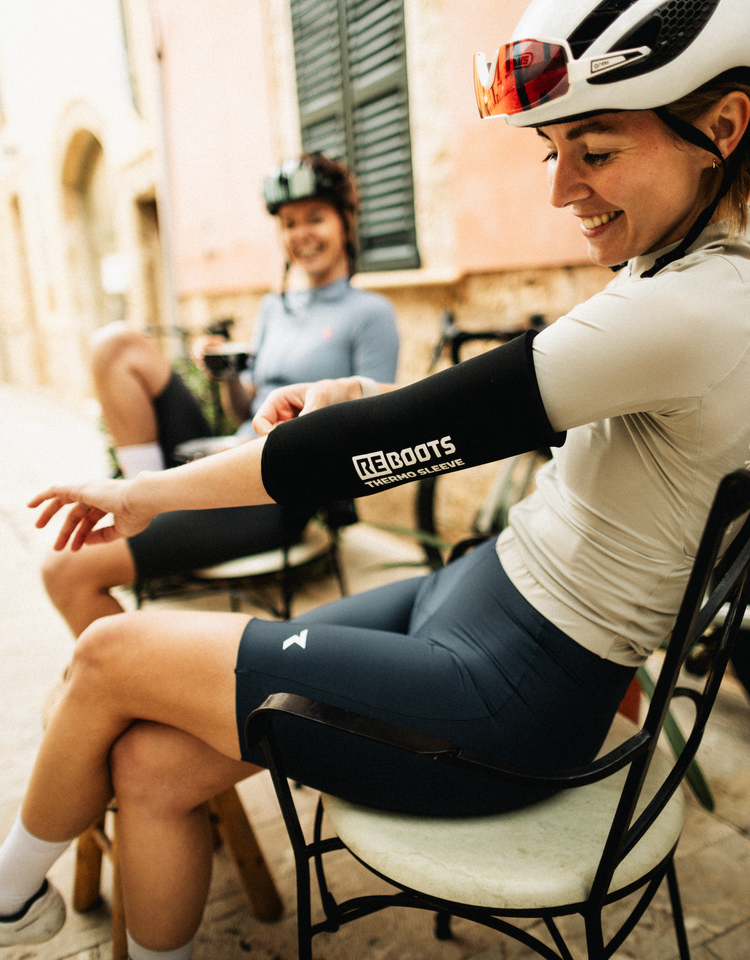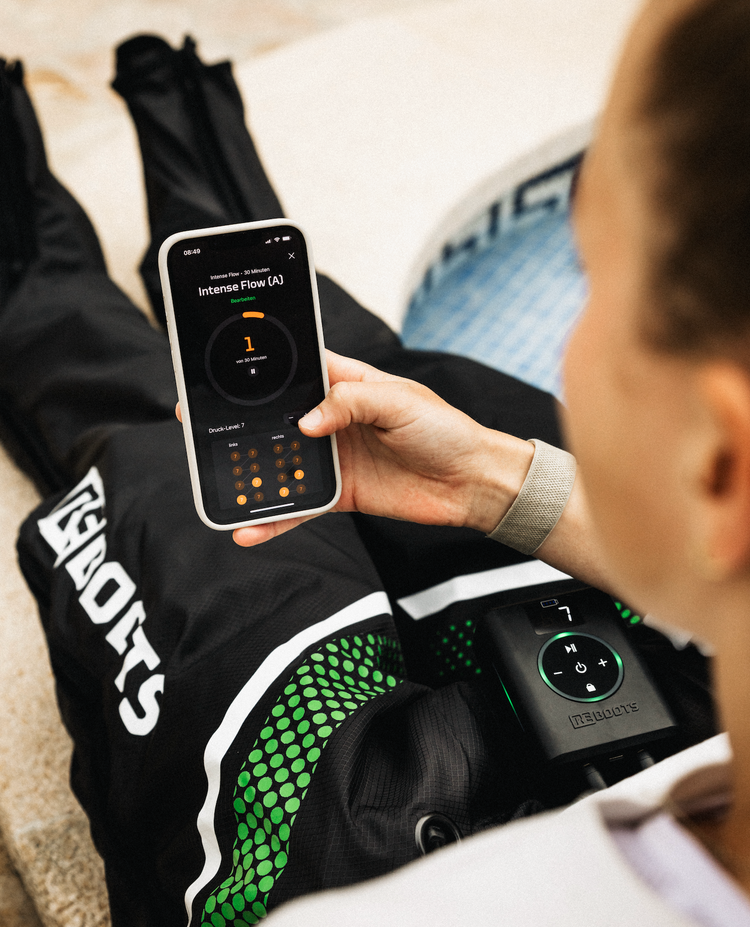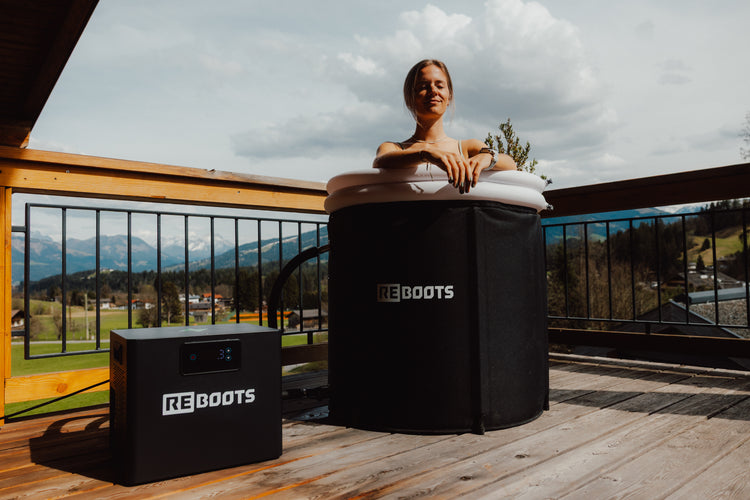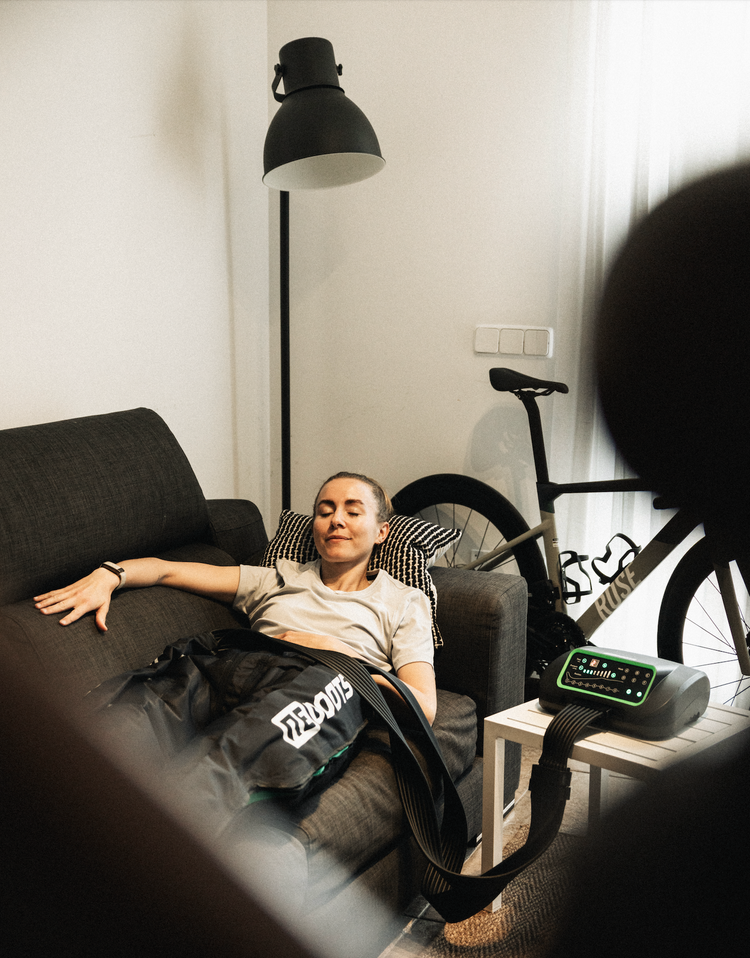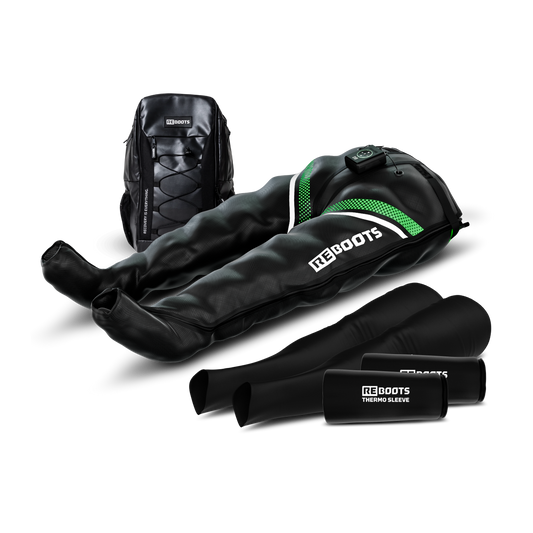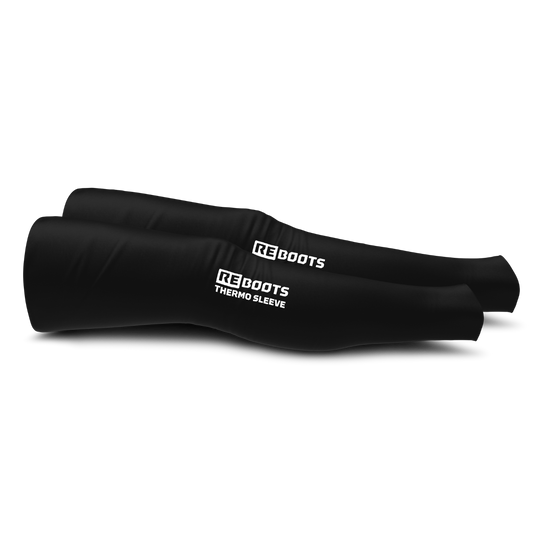Cycling constantly challenges both body and mind—whether on the road, trail, or trainer. However, progress is made during recovery, not under stress. Here, you'll learn why Recovery matters in cycling, which pro strategies work, and how you can easily integrate them into your training routine.
Why Recovery is so crucial in cycling
Cycling means constant strain: legs, hips, back, and circulation work at full speed for hours. This creates tiny stress stimuli in the muscles, known as microtraumas.
Only through conscious recovery can the body balance these processes – and thus improve strength, endurance, and cadence.
However, those who skip Recovery risk a drop in performance, muscle stiffness, or even overtraining. Smart Recovery ensures you stay strong longer and can consistently improve your performance throughout the season.
The physiological foundations of recovery
After intense training sessions, a complex recovery process begins in the body.
Lactate is broken down, glycogen stores are replenished, and damaged muscle structures are repaired. Good blood circulation and lymphatic flow are crucial for efficiently transporting metabolic products.
Hormonal factors also play a role: Growth hormones promote recovery, while high cortisol levels due to stress or lack of sleep can delay the process. In short – those who get enough sleep, regularly recover, and pay attention to rest phases build more sustainably than those who just train.
This keeps your body moving without creating new fatigue.
Active recovery for cyclists
Not every break means a standstill – quite the opposite. Active recovery keeps the circulation going and supports the muscles without overloading them.
- Cool Down: After intense rides, 10–15 minutes of easy cycling helps to gently lower the circulation.
- Mobility & Stretching: Specifically stretch hip flexors, thighs, and calves to maintain flexibility.
- Active Recovery Days: Plan easy sessions like walks, yoga, or swimming – ideal for better circulation.
Regeneration Training: Low-intensity rides improve endurance while promoting recovery.
Passive Regeneration & Tools
Sometimes the body needs real rest – and this is where passive methods come into play.
- Compression massage (e.g., Recovery Boots): Supports circulation and provides a pleasantly light feeling after long sessions.
- Cold & heat therapy: Cold is ideal after competitions or intense training blocks, while heat is suitable for relaxation on quieter days.
- Sleep & recovery: The most important building block of all. During deep sleep phases, the central repair processes take place.
Tip: Schedule regular Recovery sessions as naturally as your interval training – that's what makes the difference between tired and powerful.
Nutrition as a recovery booster
Recovery starts on the plate. After long tours or hard training, the rule is: Refill energy, provide building blocks, replace fluids.
- Carbohydrates: Replenish glycogen stores immediately after training with complex carbs like oats, rice, or fruit.
- Proteins: 20–30 g of protein within 30 minutes supports muscle repair.
- Omega-3 & Antioxidants: Berries, nuts, or fish promote cell health.
- Hydration: Drink regularly and opt for electrolyte drinks to balance fluid levels.
A well-thought-out diet acts like internal regeneration – sustainable and performance-oriented.
Plan recovery:
This is how you stay productive in the long run
Recovery works best when it's planned just like the training itself.
Periodize your load and recovery phases, pay attention to sleep, stress levels, and nutrition – and listen to your body's signals.
Digital tools like sleep or HRV trackers help keep an eye on recovery status. Even small routines – 20 minutes of Recovery Boots, 10 minutes of mobility, or a walk after work – make a difference in the long run.
Start your personal Recovery routine now!
THE FAVORITES OF MANY BIKERS
-
Reboots: Bike-Rider Recovery Bundle: Muscle Regeneration
Regular price € 1.449,00Regular priceUnit price per€ 1.586,00Sale price € 1.449,00- Tailored to the needs of cyclists
- Compression massage & cryotherapy
- Strong focus on the recovery of legs, glutes, and joints
Sale -
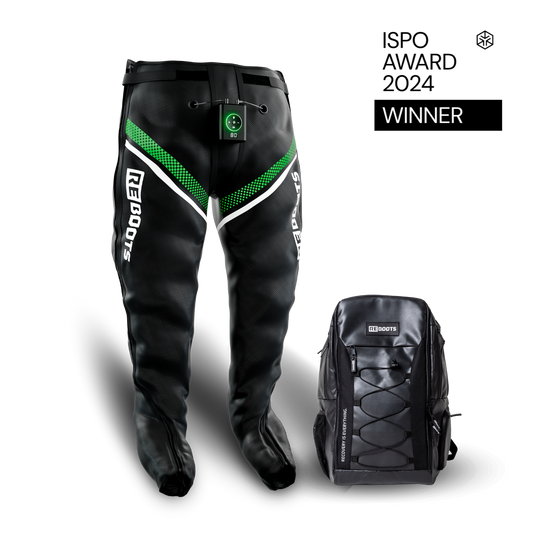 Innovation Winner
Innovation WinnerReboots Go X
Regular price € 1.349,00Regular priceUnit price per- 180mmHg maximum pressure
- A total of 16 individually adjustable air chambers
- Smart control via app for maximum customisation
-
Reboots Double Thermo Sleeve Full Leg
Regular price € 149,00Regular priceUnit price per€ 158,00Sale price € 149,00Sale -
Reboots Double Thermo Sleeves
Regular price € 80,00Regular priceUnit price per€ 90,00Sale price € 80,00Sale
Conclusion
Recover faster, perform longer
In cycling, recovery is not a luxury, but a prerequisite for performance. Those who strategically take breaks, pay attention to sleep and nutrition, and integrate modern tools like compression massage or cold therapy, stay strong in the saddle longer – and ride towards the next goal with ease.
Training + Recovery = Progress.
Or in other words: Those who recover smarter, ride further.

